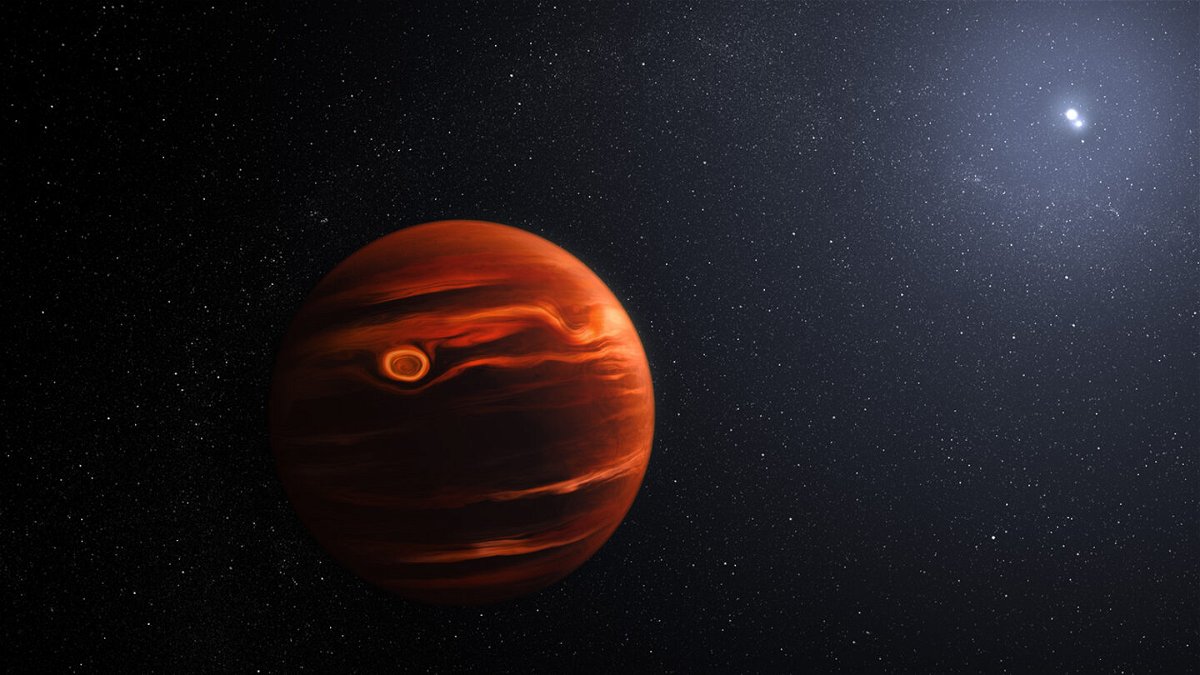Webb telescope details weather patterns on a distant planet with two suns

An illustration of exoplanet VHS 1256 b and its two stars.
By Katie Hunt, CNN
NASA’s James Webb Space Telescope has detected churning clouds of dust on a distant planet that orbits two stars.
Known as VHS 1256 b, the exoplanet is about 40 light-years away from Earth and orbits at a long distance from its stars, ideal conditions for fine grained observation with Webb, according to Brittany Miles, a fellow at the University of Arizona and coauthor of the new research.
“VHS 1256 b is about four times farther from its stars than Pluto is from our Sun, which makes it a great target for Webb,” Miles said in a news release. “That means the planet’s light is not mixed with light from its stars.”
The swirling clouds contain larger and smaller grains of silicate dust, and the clouds are constantly moving. The clouds are also extremely hot — reaching 1,500 degrees Fahrenheit (830 degrees Celsius).
“The finer silicate grains in its atmosphere may be more like tiny particles in smoke,” said study coauthor Beth Biller, a professor at the University of Edinburgh in Scotland. “The larger grains might be more like very hot, very small sand particles.”
The research also team projected that the silicates swirling in these clouds periodically get too heavy and rain into the depths of the planet’s atmosphere.
VHS 1256 b has relatively low gravity, meaning that its silicate clouds remain higher in its atmosphere, where it’s easier for Webb to detect them.
Another reason its skies are so turbulent is the planet’s young age — 150 million years old. For reference, Earth is 4.5 billion years old.
The team used observations from two instruments aboard Webb, the Near-Infrared Spectrograph and the Mid-Infrared Instrument.
Since the planet orbits at such a great distance from its stars, the researchers were able to observe it directly, rather than the more commonly used transit technique. This is when a planet passes in front of its star dimming its light, allowing astronomers to determine exoplanet characteristics.
“No other telescope has identified so many features at once for a single target,” said study coauthor Andrew Skemer of the University of California, Santa Cruz, in the news release. “We’re seeing a lot of molecules in a single spectrum from Webb that detail the planet’s dynamic cloud and weather systems.”
The research was published in The Astrophysical Journal Letters on Wednesday.
The-CNN-Wire
™ & © 2023 Cable News Network, Inc., a Warner Bros. Discovery Company. All rights reserved.



